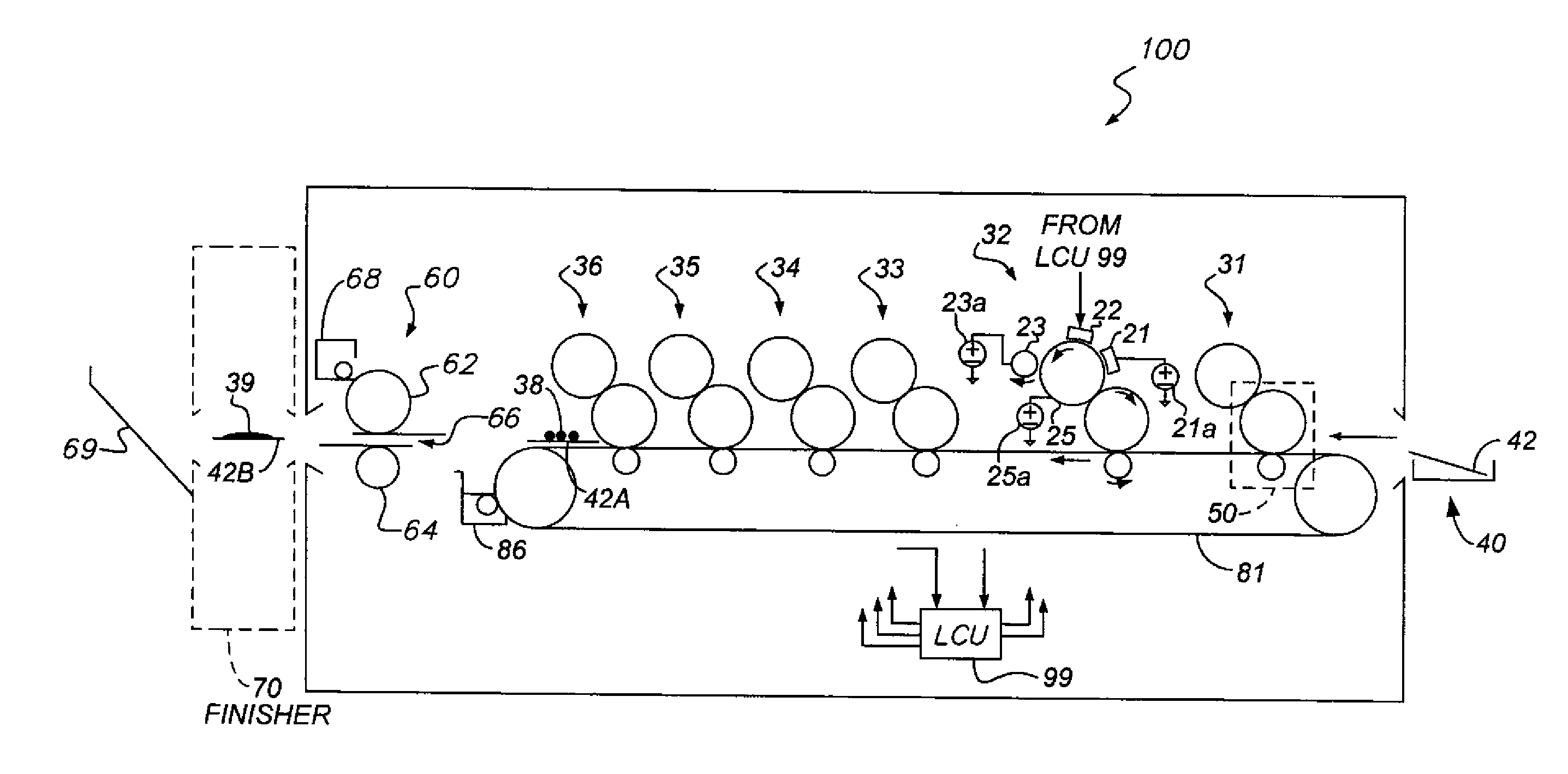Forming a 3D structural element
a technology of structural elements and 3d printing, which is applied in the direction of electrographic process, electrographic process apparatus, instruments, etc., can solve the problems of limiting the freedom of the box designer the relative strength configuration cannot be provided by conventional methods of making corrugated boards, and the box designer's freedom to adjust the mechanical characteristics of the box, etc., to achieve control of tensile strength and bending moment, less expensive, and controllable the effect of tensil
- Summary
- Abstract
- Description
- Claims
- Application Information
AI Technical Summary
Benefits of technology
Problems solved by technology
Method used
Image
Examples
Embodiment Construction
[0055]As used herein, the terms “receiver,”“receivers,”“medium,”“media,”“recording medium,” and “recording media” are used interchangeably. “Sheet” and “web” receivers are used interchangeably except when discussing embodiments that are particularly adapted to use one of those styles of receiver. “Adhere” is used herein both intransitively (toner adheres to paper) and transitively (toner adheres two sheets to each other, i.e., the adhesive forces between a toner mass and each of two sheets holds those two sheets together).
[0056]Referring back to FIG. 3B, the direction F of extension of flutes 306 is the direction in which a ray extended in direction F will not cross fluted sheet 312, even if extended to the edge of box blank 301. In conventional corrugated board, such as that shown here, the opposite to direction F can also be considered the direction of extension of flutes 306, since either direction F or its opposite can be extended to the edges of box blank 301 without crossing f...
PUM
| Property | Measurement | Unit |
|---|---|---|
| Young's modulus | aaaaa | aaaaa |
| volume-weighted median diameter | aaaaa | aaaaa |
| volume-weighted median diameter | aaaaa | aaaaa |
Abstract
Description
Claims
Application Information
 Login to View More
Login to View More - R&D
- Intellectual Property
- Life Sciences
- Materials
- Tech Scout
- Unparalleled Data Quality
- Higher Quality Content
- 60% Fewer Hallucinations
Browse by: Latest US Patents, China's latest patents, Technical Efficacy Thesaurus, Application Domain, Technology Topic, Popular Technical Reports.
© 2025 PatSnap. All rights reserved.Legal|Privacy policy|Modern Slavery Act Transparency Statement|Sitemap|About US| Contact US: help@patsnap.com



